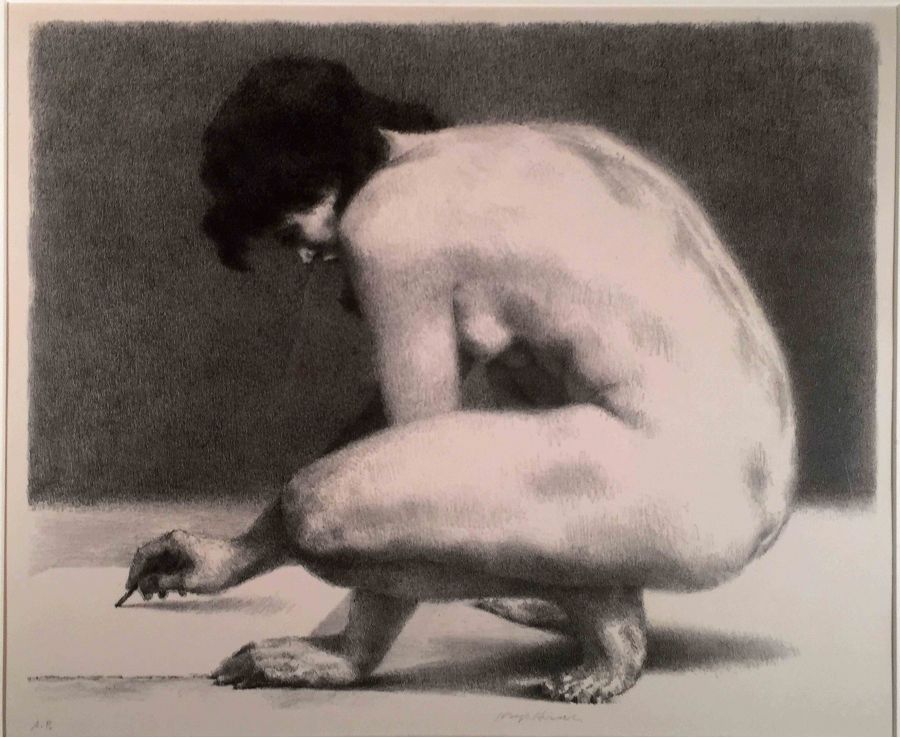Hirsch, Joseph (American, 1910-1980). NUDE DRAWING. Lithograph, 1963 (Cole 45). 14 5/8 x 18 1/4 inches. Artist's Proof aside from the edition of 50, printed by Lucien Dutruit, Paris, and published by A.A.A. Inscribed "A.P." and signed in pencil. Excellent condition.
Joseph Hirsch was a prolific painter and printmaker. He produced more than 75 prints, all in lithography, most in black and white, but some with color. We have been avid collectors and dealers in his prints, and always have a substantial selection of his work in inventory
The foregoing comes from the website of the US Department of the Interior, Bureau of Reclamation.
Born in Philadelphia in 1910, Joseph Hirsch began his study of art at the Philadelphia Museum when he was seventeen. He also studied privately with Henry Hensche in Provincetown and George Luks in New York City. In addition to formal study, Hirsch traveled extensively, including a five year stay in France. He participated in the WPA in the easel painting division, with occasional work in the mural division, where he painted murals in the Amalgamated Clothing Workers Building and the Municipal Court. During WWII, Joseph Hirsch took part in the war effort as an artist war correspondent, recording significant battles and events. He taught at the Chicago Art Institute, the American Art School, University of Utah and had a significant tenure at the Art Students League in New York. He also won many awards, among them were a fellowship at the American Academy in Rome, the Walter Lippincott Prize, First Prize at the New York World's Fair (1939), the Guggenheim Foundation Fellowship (1942, 1943), and the Fulbright Fellowship (1949). Joseph Hirsch died in 1981
Early in his career, Joseph Hirsch was introduced to the movement of Social Realism through George Luks, who was one of "The Eight". This group of painters, at the beginning of the century, chose to depict ordinary and everyday scenes. From this movement stemmed the Social Realism genre of the 1920's and 1930's. Particularly during the Great Depression, social consciousness and commentary were important components of the movement, dictating subject matter. Social commentary was the backbone for the majority of Joseph Hirsch's paintings.



